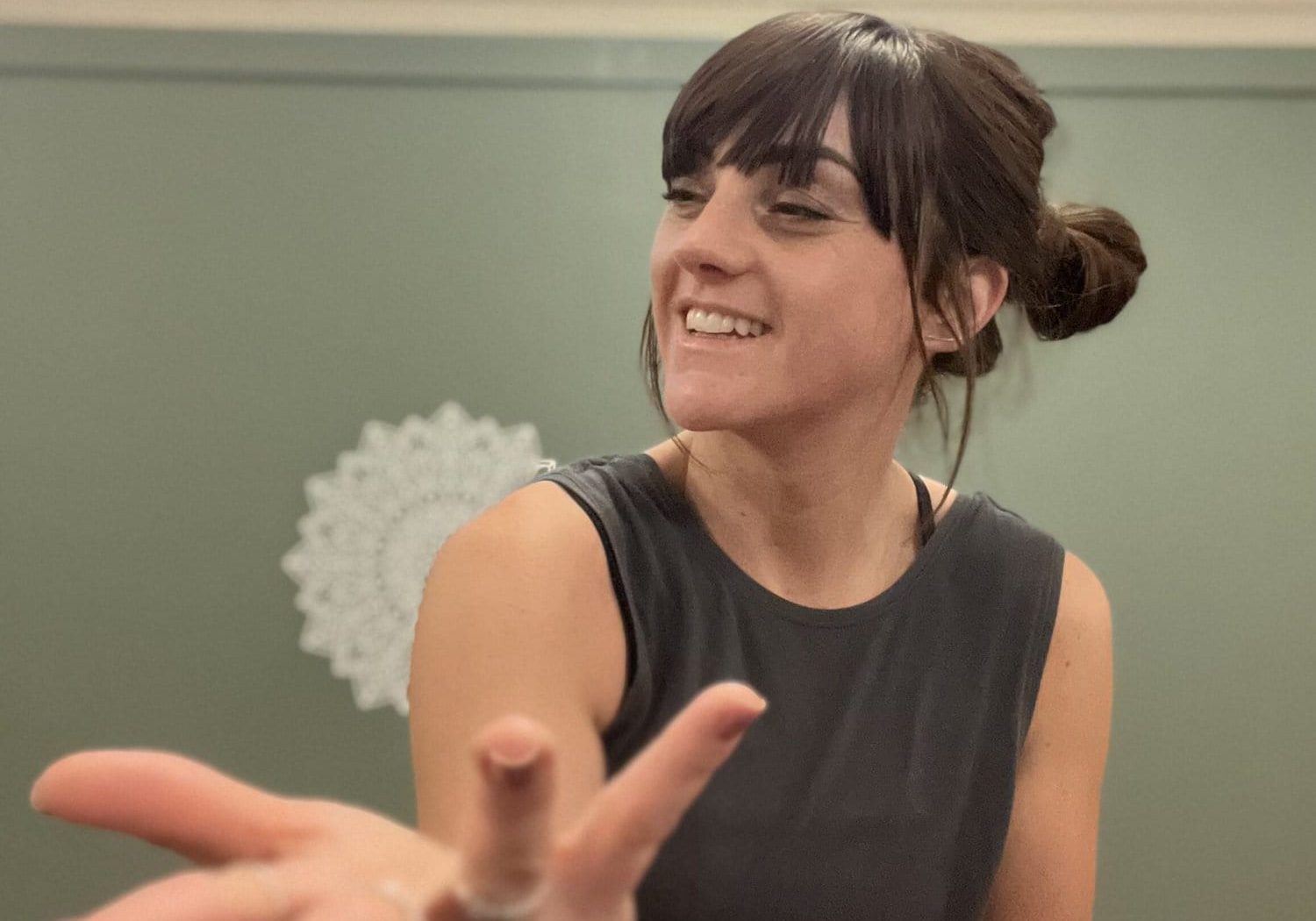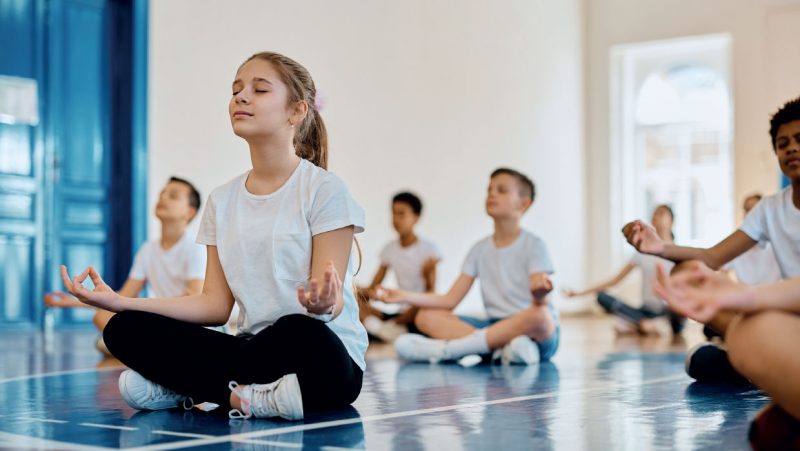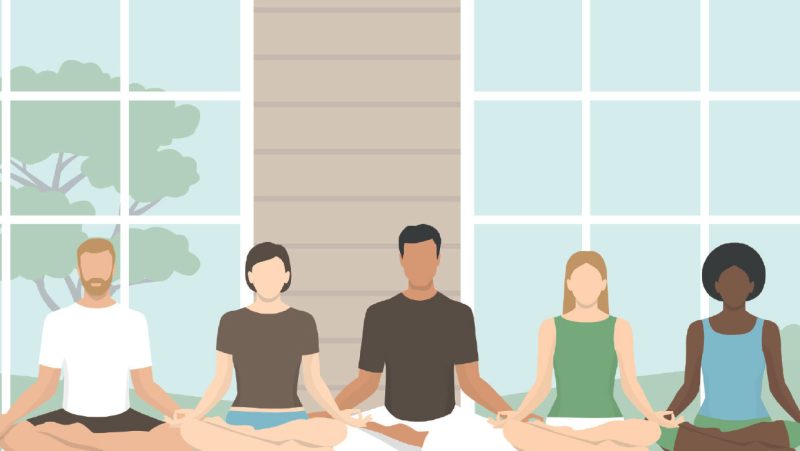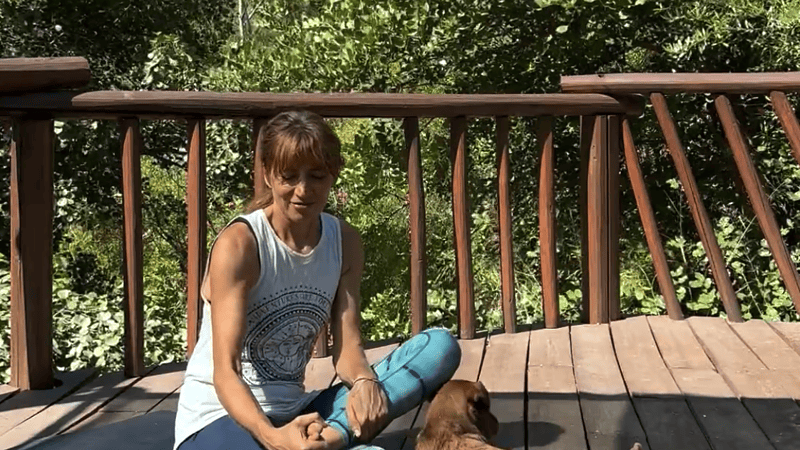
Yoga for Parkinson's Disease: Finding Strength, Softness & Self-Connection
This article will scope out some of the main challenges of living with PD, weave the beauty of the sutras and promote hope, and the knowledge that in the midst of a progressive disease; the burden of suffering truly can be reduced.
Reading time: 7 minutes
Parkinson’s Disease (PD) is the fastest-growing neurological condition in the world. It affects people of all genders, but symptoms and experiences can vary widely from person to person. While motor symptoms like tremors, stiffness, and slowness are common, many people also experience fatigue, anxiety, changes in mood, sleep disturbances, and a loss of confidence. It’s these non-motor symptoms in particular that often improve from a personalised and compassionate yoga and meditation practices.
There is little to prepare a person to receive a diagnosis of a progressive disease. I’ve taught people with PD for 6 years, and almost everyone has told me their diagnosis came as a complete surprise… the significance of that is hard to comprehend if you haven’t been there, but it’s often the starting point for yoga sessions. Move people out of the shock and freeze. A client once described their diagnosis like this:
D: My world turned upside down when I heard the life-changing words, “you have Parkinson’s Disease.” I didn’t hear another word the neurologist said. All I could hear was the word “Parkinson’s” rolling around in my mind like a crashing wave on a sea wall.
My malady had begun as numbness, a stiffness on my left side, particularly my left hand. In my case, I never even considered Parkinson’s disease (PD). I had convinced myself that I had carpal tunnel.
Unlike many conditions that come with treatment plans or hope of remission, Parkinson’s is progressive, unpredictable, and often misunderstood. The cultural image of PD can be distressing — people often fear the worst and lose hope. But with support, people with Parkinson’s can learn to manage their own unique constellation of symptoms, and make space for life to feel rich and meaningful again.
The depth and breadth of a yoga practice offers people with PD a vast ocean of hope. Yoga, with its emphasis on movement, breath, and inner awareness, offers a powerful way to support people physically, emotionally and spiritually.
Yoga Sutra 1.2
“Yogah citta vritti nirodhah”
“Yoga is the stilling of the fluctuations of the mind.”
Parkinson’s affects not only the body but also the mind — bringing anxiety, fear of movement, self-doubt, and sometimes depression or apathy. This sutra reminds us that yoga offers more than just physical postures — it’s a way of calming the inner turbulence that comes with uncertainty, distress, or worry. By connecting breath, body, and awareness, we help soothe the nervous system, reduce stress responses, and bring moments of quiet clarity — even when symptoms are present.
G: I’ve barely slept, my stomach hurts and my tremor feels out of control. Look! I have no socks on, I gave up… But I’m here. I can’t believe I’m letting myself be seen like this.
After a few minutes of practice tailored to G, using techniques they learned on the good days… they felt a reduction of the tremor.
[smiling] Can I borrow a pair of socks? I want to go home looking better, because that’s how I feel.
What sits behind this hopeful and light exchange is a growing research on the importance of nervous system regulation for people living with any chronic condition, as well as PD specifically. It’s the embodiment of the much-quoted sutra 1.2, written thousands of years ago and just as relevant now.
Yoga and medication
Medication is essential for managing the motor symptoms of PD and regular appointments with a neurologist and Parkinson’s nurse will help to keep people on track and monitor the efficacy and dose of medications. The symptoms of PD fluctuate, which means medication can have a greater or lesser effect and it’s hard to predict the outcome.
Disturbed sleep, digestive issues, hydration, and for women more so than men; hormones all impact medication and excitingly; can be supported with specific yoga practices. This can be the difference between a good day, and a bad day for a person with PD. It can mean the difference between working, taking care of family, socialising, and not…
Perhaps uniquely Parkinson’s will guide a person to focus on the present moment. Indeed, the better a person is able to feel and notice their symptoms and easing factors (what helps), the better the next moment will be. To give a person with Parkinson’s the skills and insights into their own PD, gives them control and agency with a disease that at times; felt out of their control.
Sutra 2.52:
“Tatah kshiyate prakasha avaranam”
“Through that (pranāyāmā), the veil obscuring inner light is lifted.”
Pranāyāmā is unique to yoga, the ancients knew that the tempo, breadth and the depth of prana sets the tone for the body, mind and spirit. Parkinson’s can impact breathing patterns, shallow, wispy and rapid shapes, contributes to anxiety and fatigue. Simple breathing techniques help improve lung capacity and calm the nervous system, and create a roadmap to sense of steadiness and ease. Sometimes I pair these with creative visualisations, to tame the imagination, which when left to wander, can take people to worrying places.
“Breath is always possible. Pranāyāmā gives the aspirant context, darshana (viewpoint) that shapes the way a person sees themselves and the world, a way for them to make sense of, and express their experiences and insights”. These are the words of the much-loved yoga teacher and author Richard Rosen, who himself has PD.
Beyond the body
Sutra 2.6: Drig-darshana-shaktyor ekatmata iva asmita
Egoism is the confusion between the seer and the instrument of seeing.
Illness often brings identity crises — “Who am I now?” This sutra reminds us that we are not our diagnosis or body, but the observer behind it. A key theme in yoga for people with chronic conditions: rediscovering self beyond symptoms.
As we’re seeing; Parkinson’s doesn’t just affect the physical body — it impacts mood, confidence, and a sense of self. Yoga offers a safe space to reconnect with oneself, build resilience, and process emotions. Practices like chanting, meditation, and yoga nidrā (a form of deep relaxation) can help people with PD manage anxiety, improve their sleep, and feel more grounded.
Yoga takes a holistic approach which invites people with PD to see themselves as whole and capable, beyond the diagnosis. By tuning into their own needs and rhythms, these yogis can reclaim a sense of agency and empowerment — something often lost when living with a chronic illness. As I often remind yogis; PD brought you here; but doesn’t define the full scope of our sessions.
Yoga has this beautiful way of meeting you exactly where you are, on any given day. Unlike more forceful approaches, yoga can be gentle, adaptive, and profoundly personal. One day you might feel strong enough to move and flow; the next, you might need to rest deeply and breathe. Both are yoga. Yoga for Parkinson’s is best when personalised. Sessions with me might include simple seated postures, advanced flowing sequences, somatic movements, balancing supported standing poses, gentle twists, and pranāyāmā. Most of the practices I teach yogis can be done at home, helping people with PD keep up their routine.
If you have PD the invitation is to Do Your OM Thing; to meet yourself with kindness. To move, breathe, and rest in ways that support your whole being. To discover that even in the face of challenge, there is a place inside that remains steady, soft, and beautifully alive. And please reach out as I have a lot of resources I can gift you : )
Rosie Lux
BA Hons, MA Hons





